As a homeowner, the question “Where do bed bugs hide?” has crossed my mind more times than I can count. Bed bugs are notorious for their stealthy nature and ability to hide in the smallest of spaces. With the help of this article, I’m going to uncover the secrets of these bugs and find out where they like to hide in order to better protect my home from an infestation.
What are Bed Bugs?

Bed bugs are small, oval-shaped parasitic insects. They are wingless and range in color from almost white to a reddish-brown. Adults can reach up to 5mm in length and can live up to 18 months. They feed on human blood and are attracted to warmth and carbon dioxide.
Bed bugs are often found in mattresses, bed frames, and other areas where humans rest. They can also be found in cracks and crevices in walls and furniture, as well as in luggage, suitcases, and other items.
| Characteristic | Description |
|---|---|
| Size | Adults can reach up to 5mm in length |
| Color | From almost white to a reddish-brown |
| Life Span | Up to 18 months |
| Diet | Human blood |
| Attraction | Warmth and carbon dioxide |
Identifying Bed Bugs

- Bed bugs are small, flat, oval-shaped insects that are reddish-brown in color.
- They have six legs and two antennae, and they can range in size from 1mm to 7mm.
- They typically feed on human or animal blood, and they are most active at night.
- They can be found in cracks and crevices in furniture, bedding, walls, and floors.
- They can also be found in items such as clothing, luggage, and bedding.
- They leave behind tell-tale signs such as dark spots or stains on mattresses, sheets, or upholstery.
- They may also leave behind a musty or sweet smell.
- Bed bugs can be difficult to detect and can hide in tight spaces, so it is important to be thorough when looking for them.
In Bedding and Mattresses
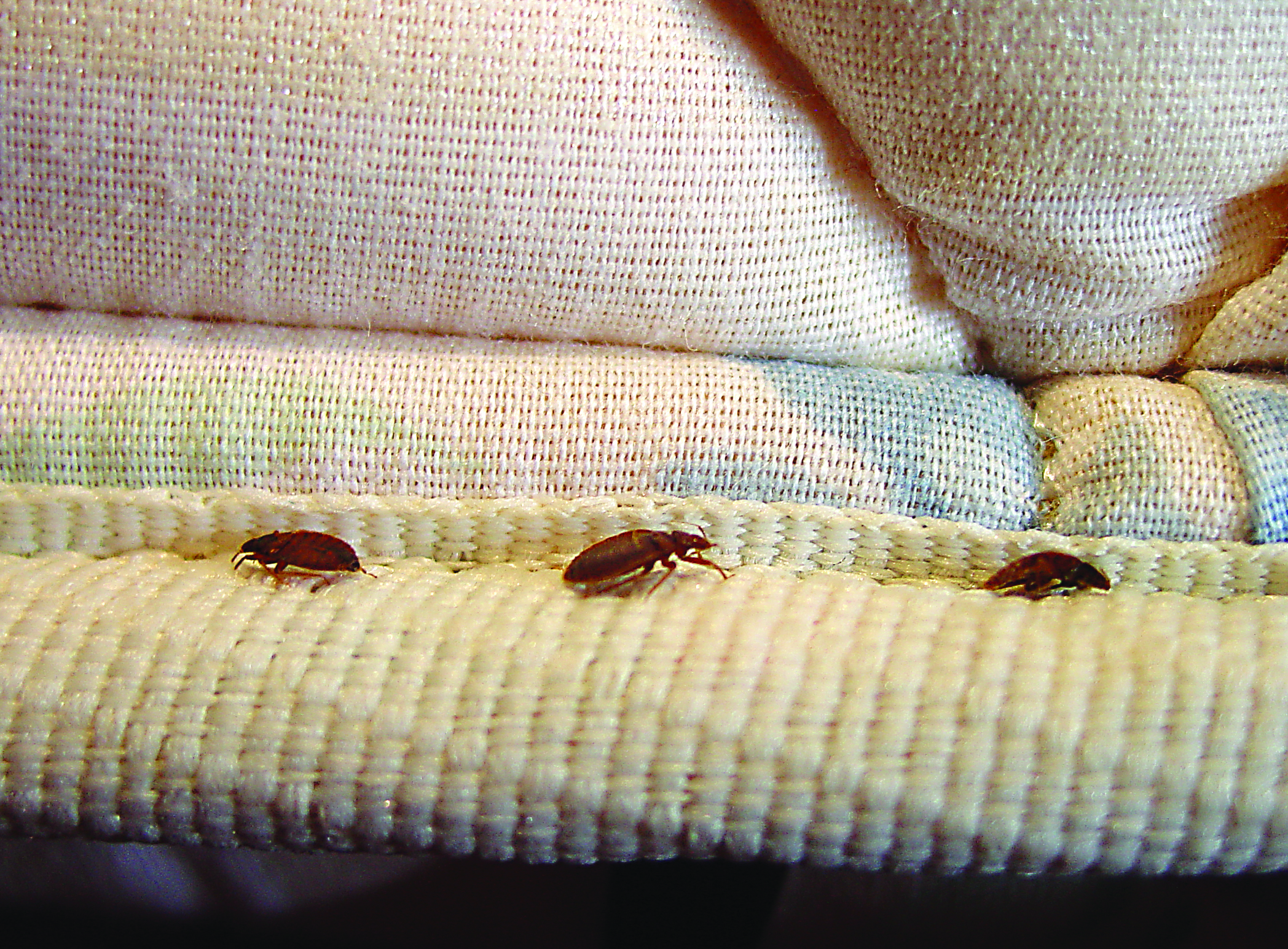
Bed bugs often hide in the folds and crevices of mattresses, bed frames, and box springs. These areas provide the perfect place for bed bugs to hide and lay their eggs. It’s important to check these areas when inspecting for bed bugs.
In Furniture and Clutter
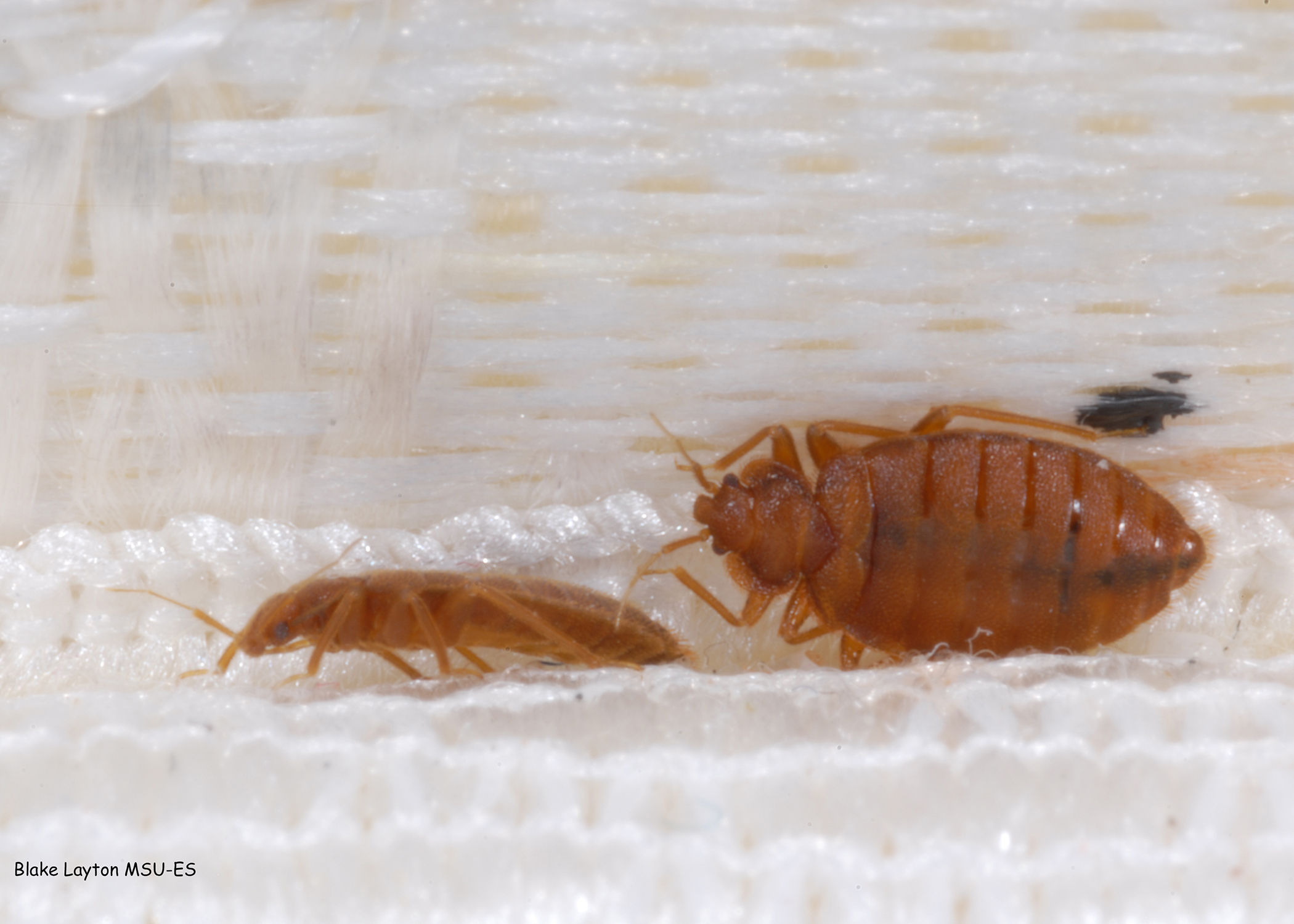
Bed bugs can also hide in furniture, like couches and chairs, as well as any type of clutter. This can include books, magazines, clothes, and other items that are lying around. These areas provide plenty of hiding spots for bed bugs, so it’s important to check these areas when inspecting for bed bugs.
Behind Wallpaper, Baseboards, and Electrical Outlets

Bed bugs can also hide behind wallpaper, baseboards, and electrical outlets. These areas often provide plenty of hiding spots for bed bugs, so it’s important to check these areas when inspecting for bed bugs.
In Carpets and Rugs

Bed bugs can also hide in carpets and rugs. These areas provide plenty of hiding spots for bed bugs, so it’s important to check these areas when inspecting for bed bugs.
In Clothing and Luggage
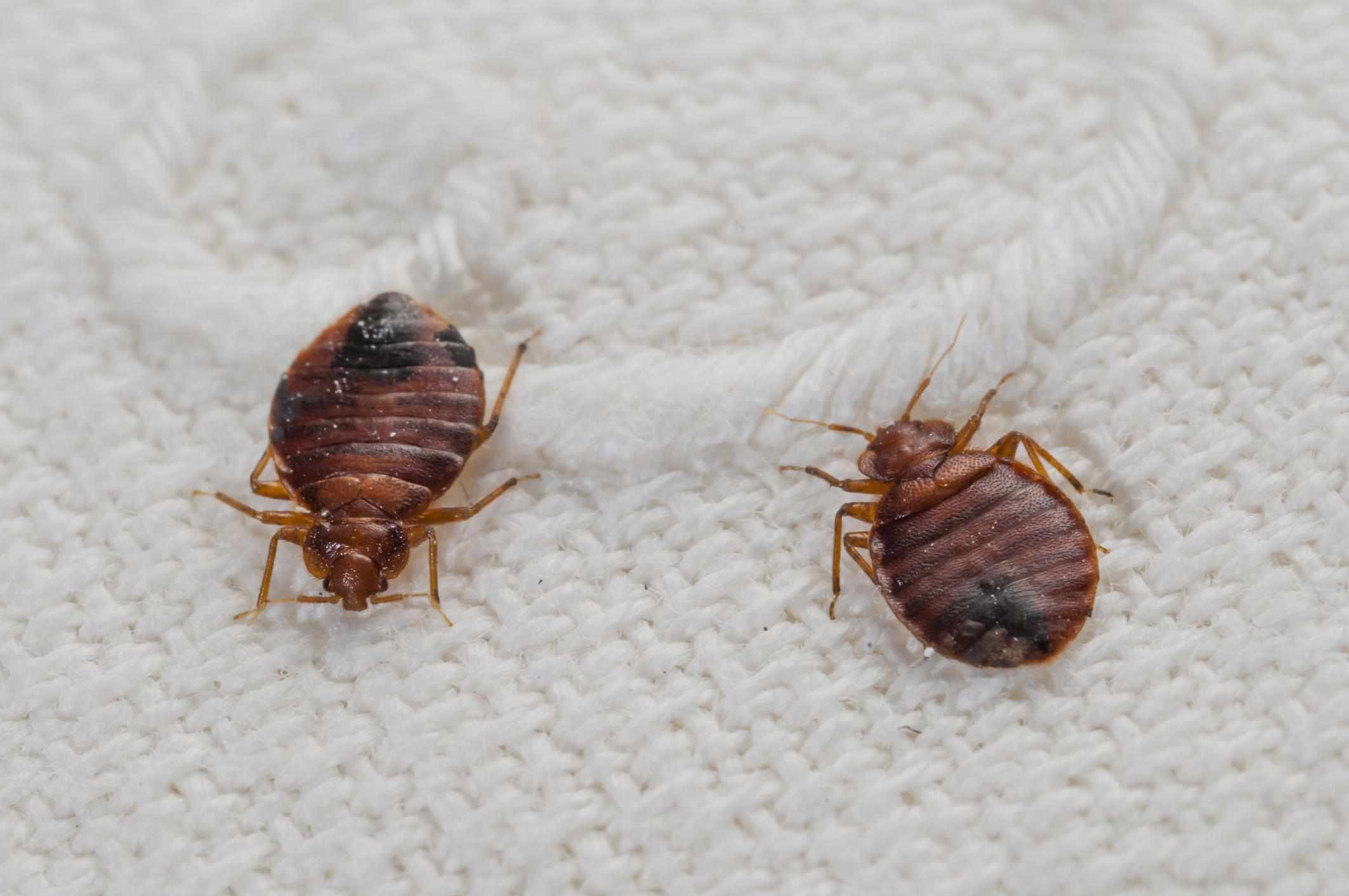
Bed bugs can also hide in clothing and luggage. These items are often left in areas where bed bugs can easily hide, so it’s important to check these items when inspecting for bed bugs.
In Cracks and Crevices

Lastly, bed bugs can also hide in cracks and crevices. These areas provide plenty of hiding spots for bed bugs, so it’s important to check these areas when inspecting for bed bugs.
How to Find Where Bed Bugs Are Hiding

The best way to figure out where bed bugs are hiding is to inspect your home and furniture for signs of the pests. Start by checking the mattress and box spring for telltale signs of an infestation, such as small dark stains from excrement, tiny white eggs, and shed skins. Pull back the covers and check the sheets and mattress seams, tufts, and folds for bed bugs.
You should also inspect furniture near the bed, such as the nightstand, headboard, and dresser. Check the crevices and drawer joints for bed bug activity. Bed bugs may also be hiding in cracks and crevices of walls, floors, and ceilings.
| Area to Inspect | Signs of Bed Bug Presence |
|---|---|
| Mattress and Box Spring | Dark Stains, Eggs, Shed Skins |
| Furniture near Bed | Activity in Crevices, Drawer Joints |
| Cracks and Crevices | Activity in Walls, Floors, Ceilings |
You may also want to look for bed bugs in other areas of your home, such as the living room and kitchen. Check any upholstered furniture like sofas and chairs, as well as curtains and other fabrics. Bed bugs can also hide in electrical outlets and behind wallpaper.
If you suspect you have a bed bug infestation, it’s important to take action as soon as possible. Contact a professional exterminator to have the infestation taken care of.
1. Check Common Bed Bug Hiding Spots
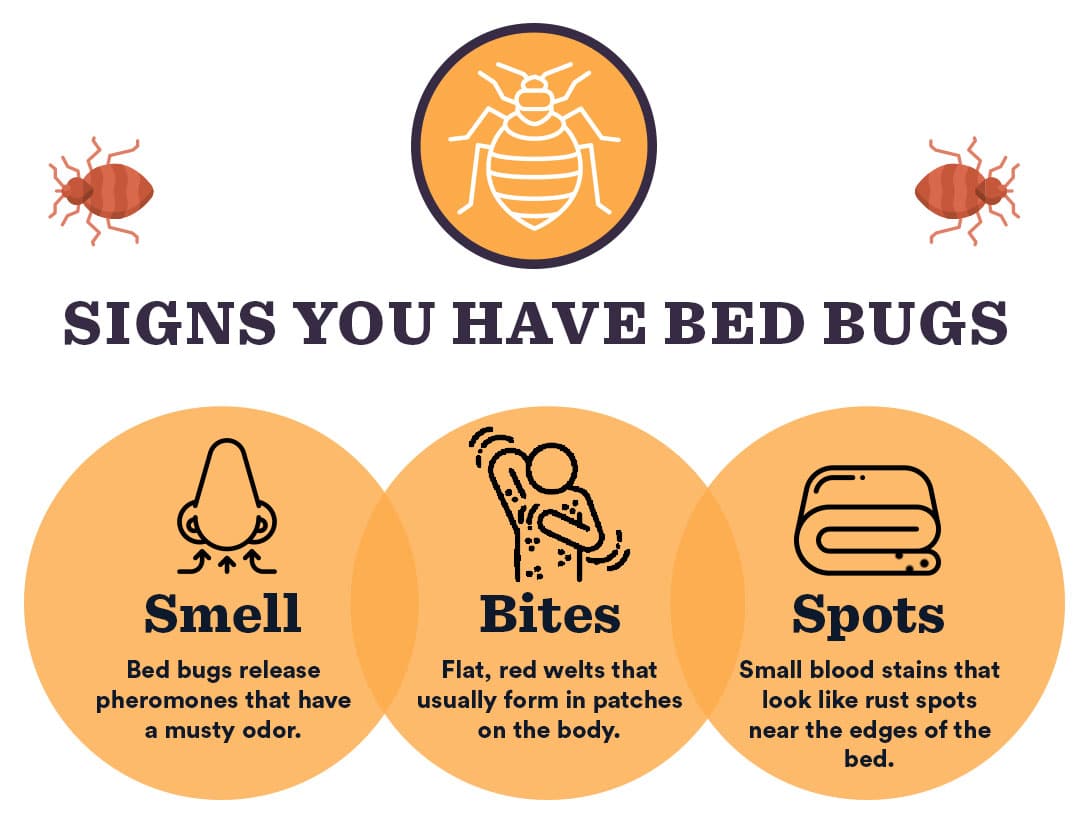
Bed bugs are small, elusive bugs that can hide in a variety of places around your home. To detect them, I recommend checking common bed bug hiding spots, such as headboards, mattresses, box springs, furniture crevices, and upholstered furniture. I also suggest checking behind baseboards, light switches, electrical outlets, picture frames, and wallpaper. Bed bugs can also hide in clutter, so I recommend going through any items that have been stored in the room. Once I’ve identified where bed bugs are hiding, I can take steps to get rid of them.
2. Check Your Entire Home
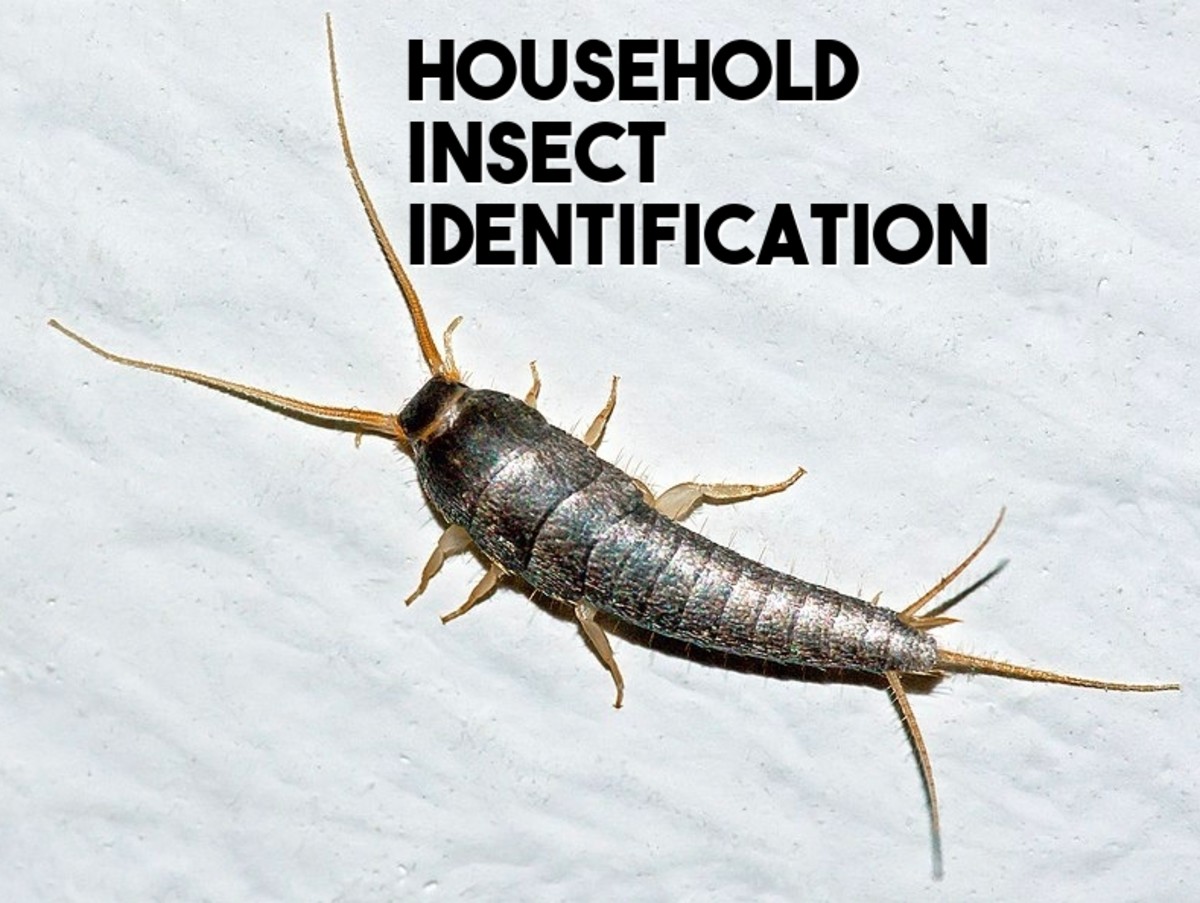
- Inspect the mattress and box spring, especially the seams and tufts.
- Check the headboard, bed frame and any other wooden furniture for tiny spots of blood.
- Check cloth-covered items like chairs, couches and curtains for signs of bed bugs.
- Look for any cracks or crevices in the walls where bed bugs may hide.
- Lift up the carpet and inspect the back of the carpet and the tack strip.
- Check behind wall hangings, light switches, electrical outlets and picture frames for signs of bed bugs.
- Look for bed bug shells and molted skin.
It’s important to check every nook and cranny of your home to ensure you find any potential bed bug infestations. Start by inspecting your mattress and box spring. Pay careful attention to the seams and tufts, as these are common hiding spots for bed bugs.
Next, check other wooden furniture in the bedroom like the headboard, bedframe, and nightstands. Look out for tiny spots of blood which could be a sign of bed bugs. Also, check cloth-covered items like chairs, couches and curtains for signs of bed bugs.
Bed bugs like to hide in cracks and crevices, so check your walls for any potential hiding spots. Lift up the carpet and inspect the back of the carpet and the tack strip. This is an area where bed bugs can often be found.
Finally, check behind wall hangings, light switches, electrical outlets and picture frames for signs of bed bugs. Also, look for any bed bug shells and molted skin, as these are common signs of an infestation.
3. Use a Bed Bug Detection Device

I highly recommend using a bed bug detection device to help detect if you have a bed bug infestation. Detection devices come in various forms, such as canine scent detection, bed bug monitors, bed bug interceptors and bed bug traps.
Canine scent detection is a highly effective method of detecting bed bugs. Trained dogs are able to sniff out bed bugs from hard to reach places. This method is often used in large buildings and homes with multiple rooms.
Bed bug monitors and interceptors are also effective in detecting bed bug infestations. Monitors are placed around the bed and detect bed bugs as they move around. Interceptors are placed at the feet of furniture and can prevent bed bugs from climbing into the bed.
Bed bug traps are an effective way to detect and catch bed bugs. Traps come in various forms such as glue traps and electric traps. Glue traps are placed around the bed and catch bed bugs as they crawl around. Electric traps attract bed bugs and use a heat source to kill them.
Using a bed bug detection device is an effective way to detect bed bugs in your home. If you suspect a bed bug infestation, using one of these devices is a great way to confirm your suspicions and get rid of the problem.
How to Prevent Bed Bugs from Hiding

The key to preventing bed bugs from hiding is to make sure that your home is as clean and clutter-free as possible. Vacuum carpets and furniture regularly, as this will clear away any potential bed bug hiding places. Vacuum around the seams of your mattress and box spring, and also around baseboards, window frames, and any cracks or crevices in your walls. Wash all bedding and linens in hot water and dry them on the highest heat setting. Make sure to inspect any second-hand furniture before bringing it into your home.
In addition, seal any cracks or crevices in your walls and floors. This will help prevent bed bugs from entering your home and will also prevent them from hiding in those same areas. Use caulk to seal any gaps around pipes and wires that enter your home. Finally, use a bed bug-proof mattress encasement to keep bed bugs from entering your mattress and box spring.
1. Protect Your Home

I take a few steps to prevent bed bugs from entering my home. I inspect my home for signs of bed bugs when I move into a new place or bring in used furniture. I also inspect my luggage and clothing when I travel. When I am out and about, I avoid sitting on upholstered furniture in public places. I make sure to store my belongings in plastic bags or containers and keep them away from walls and furniture.
I vacuum my home weekly, especially in areas where I suspect bed bugs may be present. I also vacuum under and behind furniture, along baseboards and window sills, and in any area where I store clothing. I also use a steamer to treat any furniture where I suspect an infestation.
I use mattress encasements to protect my mattress and box springs. These are zippered covers that prevent bed bugs from entering or leaving the bed. I also use mattress protectors to protect my bed from bed bug bites and accidental spills.
Finally, I keep my home clutter-free to reduce my risk of bed bug infestations. I store my belongings in sealed plastic containers and vacuum regularly to eliminate any potential hiding spots.
2. Vacuum Your Home Regularly

- Vacuuming is an effective way of removing bed bugs from your home.
- Vacuum all carpets, rugs, and furniture, paying special attention to the seams, crevices, and any other hidden areas.
- Make sure to empty the vacuum cleaner when you’re done.
- Vacuum every few days to ensure that any bed bugs that were hiding are removed.
3. Inspect Your Home for Bed Bugs
Check beds, mattresses, and furniture for signs of bed bugs. Bed bugs are small, reddish-brown insects that can be seen with the naked eye. Look for dark spots or clusters of small white eggs. If you find evidence of bed bugs, call a pest control professional to eradicate them.
Inspect all cracks and crevices in your bedroom, including headboards, nightstands, and baseboards. Bed bugs are adept at hiding in tiny spaces, so check carefully. Vacuum and dust frequently to remove bed bug eggs and fecal matter.
Bed bugs often congregate in areas where people congregate. Check behind wallpaper, in upholstered furniture, and behind electrical outlets. Pay particular attention to seams, creases, and folds in mattresses and box springs.
Finally, inspect other living areas of your home. Bed bugs are often found in living rooms, bathrooms, and kitchens. Be sure to check behind picture frames, in closets, and under carpets.
If you find bed bugs, call a pest control professional for assistance. Bed bugs are difficult to eradicate and require professional treatment. If left untreated, bed bugs can quickly spread throughout your home.
How to Get Rid of Bed Bugs
- First, identify the source of the bed bug infestation. Look for the bugs in the seams of the mattress and box springs, in cracks and crevices of the bed frame and headboard, and in any other furniture near the bed.
- Vacuum the mattress, box spring, bed frame, headboard, and other furniture. Empty the vacuum bag outside in a sealed trash bag.
- Wash all bedding and clothing in hot water and dry them on the highest dryer setting. Leave items in the dryer for at least 30 minutes.
- Encase the mattress, box spring, and pillows in dust-proof or allergen impermeable covers. This will help to prevent bed bugs from getting into the bedding.
- Use a stiff brush to scrub mattress seams to remove bed bugs and their eggs before vacuuming.
- If the infestation is severe, you may need to contact a professional exterminator for assistance.
Frequently Asked Questions
What are the most common places where bed bugs hide?
Bed bugs favor dark, warm areas, such as cracks and crevices in mattresses, box springs, furniture, and walls. They can also be found in electrical outlets, behind wallpaper, and in other small spaces. Bed bugs are also known to hide in fabric or clothing, such as suitcases, purses, and other items that are stored for long periods of time.
What can I do to find where bed bugs are hiding in my home?
Inspect potential bed bug habitats such as bed frames, mattresses, box springs, headboards, and furniture. Look for small rust-colored stains, which could be bed bug droppings, egg shells, or shed skins. Check the seams and folds of mattresses and furniture for signs of bed bugs. Check behind wallpaper, baseboards, and electrical outlets for bed bug hiding spots. Use a flashlight to search under beds and furniture. Use a vacuum cleaner to dislodge bed bugs and their eggs from furniture and bedding.
Are there certain places where bed bugs tend to hide at night?
Bed bugs are nocturnal creatures and hide during the day in cracks and crevices. Commonly found places for bed bugs to hide include mattresses, bed frames, bedding, furniture and carpets. They also may hide behind baseboards, electrical switch plates, pictures, wallpaper, and curtains. Bed bugs are attracted to warmth and carbon dioxide, so they will hide in these areas close to a human host.
What are the signs I should look for to determine if bed bugs are hiding on my bed?
Bed bugs are small, brown insects that can hide in the seams and crevices of mattresses, bed frames, and other furniture. Signs that bed bugs may be present include dark spots on bedding and mattresses, small white eggs, molted bed bug shells, and a sweet, musty odor. If you suspect bed bugs, inspect the mattress and bed frame for signs of the pests.
Where else do bed bugs usually hide besides beds?
Bed bugs usually hide in cracks, crevices, and tight spaces near their host. Common places include mattresses, box springs, bed frames, and headboards, but they can also be found in furniture, carpets, and walls. Bed bugs can hide behind baseboards, electrical outlets, picture frames, and wallpaper. They can also be found in clothing, luggage, and other items stored or kept near the bed. Bed bugs can also travel between rooms in multi-unit buildings, such as apartments and hotels.
Conclusion
Bed bugs hide in a variety of places, from mattresses to furniture, electronics, and even behind wallpaper. The best way to prevent an infestation is to inspect items thoroughly before bringing them into your home, and to keep your home clean and clutter-free. Regularly inspect your bedding, furniture, and other items for bed bug signs such as shed exoskeletons, fecal matter, and eggs. If you do find signs of bed bugs, contact a professional pest exterminator for help.






